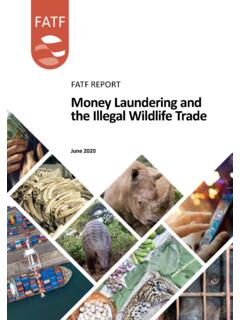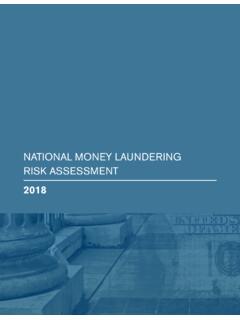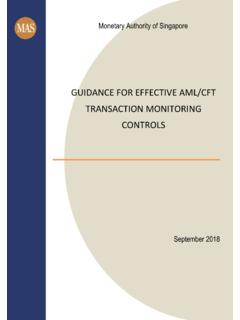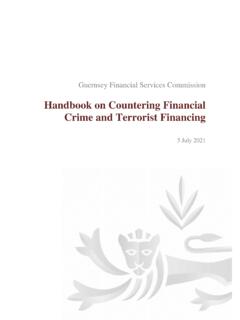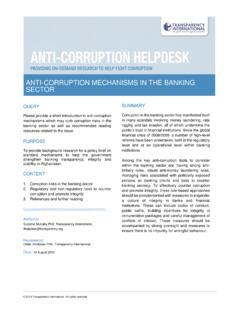Transcription of Beneficial Ownership Toolkit - OECD
1 A Beneficial Ownership Implementation ToolkitInter-American Development Bank IDB & OECD 2019 A Beneficial Ownership Implementation Toolkit Prepared by: The Secretariat of the Global Forum on Transparency and Exchange of Information for Tax Purposes Inter-American Development Bank* March 2019 Copyright 2019. Inter-American Development Bank ("IDB") and the Organisation for Economic Cooperation and Development("OECD''). This work is licensed under a Creative Commons IGO Attribution-NonCommercial-NoDerivatives (CCJGO BY-NC-ND) license( ) and may be reproduced with attribution to the IDB and the OECD and for any non-commercial purpose. No derivative work is allowed. Any dispute related to the use of the works of the IDB and the OECD that cannot be settled amicably shall be submitted to arbitration pursuant to the UNCITRAL rules.
2 The use of the IDB's and OECD's name for any purpose other than for attribution, and the use of IDB's and OECD's logo shall be subject to a separate written license agreement between the IDB and the user, the OECD and the user, and it is not authorized as part of this CC-IGO that the link provided above includes additional terms and conditions of the opinions expressed in this work are those of the authors and do not necessarily reflect the views of theIDB, its Board of Directors, the OECD or the countries they represent. *A joint publication of the Secretariat of the Global Forum on Transparency and Exchange of Information forTax Purposes, and the Inter-American Development Bank. The opinions expressed and arguments employedherein do not necessarily reflect the official views of the members of the Global Forum, OECD or the Inter-American Development Bank (IDB), its Board of Directors, or the countries they represent.
3 IDB & OECD 2019 CONTENTS ABBREVIATIONS .. 4 PREFACE .. 1 INTRODUCTION .. 2 CONCEPTS AND PRACTICE .. 3 Part I: What Is Beneficial Ownership ? .. 3 Determining the Beneficial Owner .. 4 Why is it important to identify a BO? .. 4 Part II: An International Focus on Beneficial Ownership .. 6 International initiatives .. 6 The Global Forum on Transparency and Exchange of Information for Tax Purposes .. 6 Financial Action Task Force .. 7 The Extractive Industries Transparency Initiative (EITI) .. 7 The International 7 The FATF Standard .. 7 Establishing Beneficial Ownership .. 7 Matters of Ownership and 8 The essential FATF Recommendations .. 8 The Global Forum Standards .. 9 Main differences .. 10 Supervision and enforcement.
4 11 Part III: Availability of Beneficial Ownership Information for Legal Persons and Arrangements .. 12 Differences between legal persons and legal 12 Beneficial Ownership information for companies and other legal persons .. 13 Cascading tests .. 13 Using thresholds .. 14 Threshold and indirect Ownership .. 14 Exception for publicly traded commercial companies or public collective investment vehicles .. 15 Legal arrangements ( trusts) .. 15 15 Identification of Beneficial owners .. 16 Determining the BO when natural persons and legal arrangements are combined .. 17 Registries and public information .. 18 Making BO information publicly available .. 21 Part IV: Policy Options for Implementation .. 21 DNFBPs .. 26 Tax 28 Part V: Practical Considerations for a Beneficial Ownership Framework.
5 30 Ensuring Beneficial Ownership information for exchange of information on request (EOIR).. 30 Adopting a legal definition .. 30 Using a 31 Exempted entities .. 31 The missing AML link .. 31 Bearer shares .. 31 Inactive Entities .. 32 Introduced Business .. 32 Dealing with foreign companies .. 33 Nominees and mandatarios .. 33 Common-law jurisdictions .. 33 Civil-law jurisdictions .. 34 IDB & OECD 2019 Trusts having their administration in a jurisdiction or having a trustee resident there .. 34 Non-professional trustees .. 34 Ongoing accuracy .. 34 Maintaining information .. 35 Access powers .. 35 Supervision and enforcement .. 36 Framework gaps versus practice .. 37 Part VI. Automatic Exchange of Information .. 37 CONCLUSION.
6 41 PART VII. Assistance Available .. 41 ANNEX 1. Beneficial Ownership GAP ANALYSIS TOOL .. 42 IDB & OECD 2019 ABBREVIATIONS AEOI Automatic exchange of information AML/CTF Anti-money laundering and counter-terrorist financing BO(s) Beneficial owner(s) CDD Customer due diligence CRS Common reporting standard DNFBP Designated non-financial businesses and professions EITI Extractive Industries Transparency Initiative EIOR Exchange of information on request EU European Union FATF Financial Action Task Force FI Financial Institution GF Global Forum on Transparency and Exchange of Information for Tax Purposes IBC International business corporation IDB Inter-American Development Bank KYC Know Your Customer ML/TF Money laundering and terrorist financing NFE Non-Financial Entity OECD Organisation for Economic Co-operation and Development TCSP Trust and company service providers 1 IDB & OECD 2019 PREFACE Tax transparency
7 Continues to be a key focus of governments and the public, as demonstrated by the continuing media coverage surrounding data leaks in recent years. These data leaks have also shown that tax evasion is not an isolated financial crime, but is commonly linked to a broad set of activities, including money laundering and corruption, that negatively impact societies. The leaks revealed the use of companies and trusts to hide the Beneficial owners of assets and highlighted the key role that transparency of Ownership information can play in preventing tax evasion , corruption and other related activities. International standards require minimum levels of transparency concerning the Beneficial owners of companies, trusts and other legal arrangements for tax as well as anti-money laundering purposes.
8 It is more difficult for tax evaders and other lawbreakers to hide their criminal activities and proceeds of crime in jurisdictions where these standards are fully implemented. This Toolkit contains policy considerations that Global Forum member jurisdictions can use to implement legal and supervisory frameworks to identify and collect Beneficial Ownership information, which is now a requirement of the international standards. No jurisdiction is a blank slate in the area of Beneficial Ownership , because some domestic framework related to anti-money laundering (AML) and countering the financing of terrorism (CFT) measures is inevitably already in place. With a focus on ensuring the availability of Beneficial Ownership information for tax purposes, this Toolkit therefore provides general principles, in recognition of the fact that there is no one-size-fits-all approach to achieving compliance with the international tax transparency standards.
9 It focuses on providing examples of various approaches that have been taken to ensure the availability of Beneficial Ownership information and offers practical suggestions to be taken into account when considering various policy options. Each jurisdiction will have to carry out its own internal assessment of the best methods for implementation, taking into account the unique legal, policy, and structural frameworks already in place. This Toolkit will continue to be updated over time, so as to capture further developments in relevant standards and best practices. This Toolkit was jointly developed by the Secretariat of the Global Forum on Transparency and Exchange of Information for Tax Purposes (Global Forum) and the Inter-American Development Bank (IDB).
10 * Some portions of the Toolkit include material (including graphics) from a recent IDB publication on the regulation of Beneficial Ownership in Latin America and the * The IDB acknowledges the valuable contributions by Francesco De Simone, Roberto de Michele, Pamela Valderrama, Ubaldo Gonzalez de Frutos, and Alberto Barreix from IDB and the international consultants Leonardo Costa and Andres Knobel, and also thanks the Transparency Fund of the Inter-American Bank which is supported by the governments of Canada, Italy, Norway, Sweden, and the MasterCard Corporation. 2 IDB & OECD 2019 INTRODUCTION The availability of Beneficial Ownership information, the natural person behind a legal entity or arrangement, is now a key requirement of international tax transparency and the fight against tax evasion and other financial crimes.










